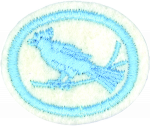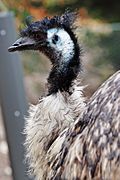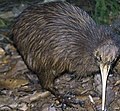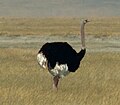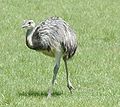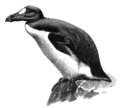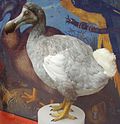AY Honors/Birds/Answer Key/es
| Aves | ||
|---|---|---|
| Asociación General
|
Destreza: 1 Año de introducción: 1928 |
|
Requisitos
|
La especialidad de Aves es un componente de la Maestría Naturaleza. |
|
La especialidad de Aves es un componente de la Maestría Zoología. |
| Conexión Logros para la Investidura: Esta especialidad está relacionada con los requisitos de Logros para la Investidura para AMIGO Estudio de la naturaleza que requiere configurar una estación de alimentación e informar sobre las aves visitantes observadas durante un período de siete días como está escrito en el requisito 7a de esta especialidad. Esta especialidad es una elección popular para la especialidad de la categoría de Estudio de la naturaleza de nivel de destreza 1 requerido para los AMIGOS DE LA NATURALEZA. |
1
A menudo es útil comparar las características de grupos decriaturas para ver qué es lo mismo que otras criaturas, pero para identificarlas, es útil encontrar las diferencias también. Hay cinco clases de criaturas con una columna vertebral. Estas clases incluyen los peces, anfibios, reptiles, aves y mamíferos.
Todos los vertebrados tienen una columna vertebral, pero las aves tienen una serie de características únicas, tales como:
- Vuelan
- Huevos con cáscara dura
- Sangre caliente
- Cubiertos con plumas
- Huesos huecos
- Estructura ósea en el ojo
- Vista aguda
- Voces musicales
- Capacidad para detectar campos magnéticos
- Muy coloridos
Cada una de estas cosas parece bastante única, pero cuando miramos las otras clases de vertebrados, encontramos que las aves no son las únicas criaturas que pueden volar. Hay peces voladores, serpientes que planean, ranas que planean y murciélagos. Cada clase de vertebrados tiene la capacidad de volar y los murciélagos al menos pueden igualar la capacidad de vuelo de las aves. También debemos observar que no todas las aves son capaces de volar (pingüinos, avestruces y otros son incapaces de volar).
Los mamíferos son de sangre caliente entonces eso no es exclusivo de las aves. Las ballenas, las ranas y algunos de los primates tienen voces muy musicales, aunque pocos se pueden comparar con las aves liras de Nueva Guinea o incluso con un simple cenzontle. Muchos de los mamíferos como los suricatos tienen buena vista, entonces tampoco es único, y la mayoría de los peces tienen la capacidad de detectar campos electromagnéticos.
Cuando hemos comparado las distintas clases, encontramos que hay sólo algunas cosas que son exclusivas de la clase Aves.
- Todos ponen huevos de caparazón duro que ellos incuban usando su temperatura corporal.
- Todos ellos están cubiertos con una estructura de plumas que difiere mucho de las escamas y la piel.
- Huesos huecos les permiten volar casi sin esfuerzo.
- Un hueso de anillo en los ojos de los pájaros es lo que les permite enfocarse tan bien y tener una vista tan aguda.
Todas estas características nos dan una idea de lo que hace que las aves sean únicas y también una idea de por qué estamos tan atraídos por estas coloridas criaturas voladoras.
2
El Alca impennis (Alca gigante) y el Raphus cucullatus (Dodo) están representados con las otras aves no voladoras porque eran aves no voladoras que enfrentaban muchos de los mismos peligros de algunas de las aves no voladoras actuales, como el Apteryx (Kiwi). El hombre y los animales que vienen con el hombre como perros, cerdos, gatos y ratas son muy peligrosos para cualquier ave que anide en el suelo. Muchas aves sin vuelo se han extinguido debido al hombre y sus acciones. Estas dos especies representan un número mucho mayor que se ha extinguido a manos del hombre.
Casuario
- Los casuarios son nativos de los bosques tropicales de Nueva Guinea y el noreste de Australia. Algunas islas cercanas también tienen pequeñas poblaciones de casuarios pero no se sabe si son naturales o el resultado del comercio de aves jóvenes en Nueva Guinea. Ellos son frugívoros; fruta caída y fruta en ramas bajas son el pilar de su dieta. También comen hongos, caracoles, insectos, ranas, serpientes y otros animales pequeños.
Emú
- El emú es el ave más grande originaria de Australia. Comen una variedad de especies de plantas; el tipo de plantas consumidas depende de la disponibilidad estacional. También comen insectos, incluyendo saltamontes y grillos, mariquitas, orugas, larvas de polillas de algodón y hormigas.
Kiwi
- Los kiwis son de Nueva Zelanda. Comen pequeños invertebrados, semillas, larvas y muchas variedades de gusanos. También pueden comer frutas, pequeños cangrejos, anguilas y anfibios. Sus largos picos, con las fosas nasales al final de ellos, los ayudan a atrapar presas.
Avestruz
- Los avestruces viven en las sabanas de África. Se alimentan principalmente de semillas y otras materias vegetales; ocasionalmente también comen insectos como langostas. A falta de dientes, tragan guijarros que ayudan como gastrolitos a moler los alimentos tragados en la molleja. Un avestruz adulto típicamente lleva alrededor de 1 kg de piedras en el estómago.
Pingüino
- Los pingüinos son aves acuáticas que viven exclusivamente en el hemisferio sur. La mayoría de los pingüinos se alimentan de camarones antárticos, peces, calamares y otras formas de vida marina capturadas mientras nadan bajo el agua. Pasan la mitad de su vida en a tierra y la otra mitad en los océanos.
Ñandú
- Los ñandúes son originarios de Sudamérica. Son omnívoros, prefieren las plantas de hoja ancha, pero también comen semillas, raíces, frutas, insectos y pequeños vertebrados.
3
Las aves fueron creadas en el quinto día - véase Template:Bible link/es
Pelícano, cuervo, lechuza - Template:Bible link/es
Gallina - Template:Bible link/es, Template:Bible link/es
Águila - Template:Bible link/es; Template:Bible link/es; Template:Bible link/es
Avestruz - Template:Bible link/es
Paloma - Template:Bible link/es; Template:Bible link/es; Template:Bible link/es
Águila, quebrantahuesos, azor, gallinazo, milano, cuervo, avestruz, lechuza, gaviota, gavilán, búho, somormujo, ibis, calamón, pelícano, buitre, cigüeña, garza, abubilla- Template:Bible link/es
Pavo real - Template:Bible link/es
Cuervo - Template:Bible link/es
Perdiz - Template:Bible link/es
Various Bible versions may translate the original Scriptures differently e.g. one version may use "kite," while another may use "falcon." The texts given are examples, and some birds are named many times.
4
"Children should be encouraged to search out in nature the objects that illustrate Bible teachings, and to trace in the Bible the similitudes drawn from nature. They should search out, both in nature and in Holy Writ, every object representing Christ, and those also that He employed in illustrating truth. Thus may they learn to see Him in tree and vine, in lily and rose, in sun and star. They may learn to hear His voice in the song of birds, in the sighing of the trees, in the rolling thunder, and in the music of the sea. And every object in nature will repeat to them His precious lessons." Child Guidance, p. 46.
1. God created the birds to point to Himself as the provider of all that we need. If He takes care of the birds, He shall surely take care of our needs. (Luke 12:24)
2. Birds teach us about God. (Job 12:7-9)
- God says he will protect us like the mother hen protects her chicks. (Matt. 23:37)
- Jesus said God sees the sparrow fall, and much more He sees us. (Matt. 10:29-31)
- He will give us strength like that of the eagle. (Isa. 40:31)
3. The adaptations of birds (especially their beaks, their legs and feet) show us God's creative power.
4. We ought to trust God totally just as birds do. (Matt 6:26)
5. Jesus loves everybody and every thing and as He takes the animals in to account before He does something, He wants us to do so as well. (Jonah 4:11)
5
Birders equip themselves with a good field guide and a checklist of birds found in the the local area they are birding. While the field guide may cover the whole continent or country and include helpful pictures and data that help you fill in the info you need for this requirement, a local checklist will narrow down the birds you can expect to actually see.
You can easily find bird checklists online - look for a birding club in your area or check out /http://avibase.bsc-eoc.org/avibase.jsp?lang=EN which is based in Canada but covers the world with various degrees of completeness.
You can also consult Wikibooks' Guide to Birds to help you identify some birds. As of this writing, this field guide is still in its infancy, so you might be well served to purchase a more thorough field guide book, especially since physical field guides don't need batteries or wi fi. Field guides are generally tailored to a specific area of the world, so be sure to consult one that covers your area.
The Birds - Advanced honor requires observing 30 additional birds and collecting additional information, so if you want to earn the advanced honor you should follow the additional requirements for the first 30 birds right from the start. The requirement says:
10. Make a list of 60 species of wild birds, including birds from at least ten different families, that you personally have observed and positively identified by sight out of doors. For each species on this list note the following: a. Name b. Date observed c. Place observed d. Habitat (i.e., field, woods, river, lake, etc.) e. Status where observed (permanent resident, winter resident, summer resident, migrant, vagrant)
6
The Guide to Birds has "bird call" links for several birds (though it is not yet exhaustive). Listen to the most common birds in your area so that you may learn to identify them by their calls. Many birds (such as the woodpeckers and the Bobwhite) are a lot easier to identify by their calls, because they are so much easier to hear than to see.
You can also purchase CD's from Peterson's Birding by Ear series. Select one that was made for your region.
7
7a
This should be done by the individual
7b
7c
i
Hummingbird nectar should consist of four parts water to one part sugar (by volume).
ii
Honey promotes the growth of a fungus that can kill hummingbirds&, so it should never be used.
The assertion that food coloring is bad for hummingbirds has been around since the 1970's, but it has never been proven conclusively&. However, since there is no reason to put food coloring in the nectar, why bother? The hummingbirds can find the feeder by the feeder's color, so it is not necessary to color the nectar.
iii
The feeder should be cleaned weekly.
iv
Every time you clean the feeder, check for black mold. If you find any, clean the feeder with bleach. Do not clean a feeder with soap (but you can use white vinegar as long as you rinse it thoroughly afterwards). If hummingbirds are not emptying the feeder before the syrup spoils, don't fill it completely next time. Spoiled syrup will appear cloudy and must be discarded - hummers won't eat it.
Clean the feeder thoroughly once per month with a bottle brush. Soak it in a solution of a 60ml![]() bleach and 4 liters
bleach and 4 liters![]() of water. Rinse well, and refill with syrup.
of water. Rinse well, and refill with syrup.
Unless precautions are taken, ants will get into your feeder. Look for a dripless feeder with an ant moat. These are very effective at addressing the problem.
7d
Different habitats may include:
- Fresh water (rivers, lakes, ponds, etc.)
- Salt water (bays & ocean)
- Fields & meadows
- Forests
- Desserts
- Wetlands
Choose three such areas and observe them. Make lists of the birds you see in each area. You should expect to see differences, as different birds frequent different habitats. For example, you should expect to see herons, pipers, ducks and geese near water, and you should expect to see meadowlarks in fields, and so forth.
References
- Categoría: Tiene imagen de insignia
- Adventist Youth Honors Answer Book/Honors/es
- Adventist Youth Honors Answer Book/es
- Adventist Youth Honors Answer Book/Skill Level 1/es
- Categoría: Libro de respuestas de especialidades JA/Especialidades introducidas en 1928
- Adventist Youth Honors Answer Book/General Conference/es
- Adventist Youth Honors Answer Book/Nature/es
- Adventist Youth Honors Answer Book/Stage 100/es
- Adventist Youth Honors Answer Book/Naturalist Master Award/Fauna/es
- Adventist Youth Honors Answer Book/Zoology Master Award/Fauna/es
- Adventist Youth Honors Answer Book/IAConnection/es
- Adventist Youth Honors Answer Book
- Adventist Youth Honors Answer Book/Do at home
